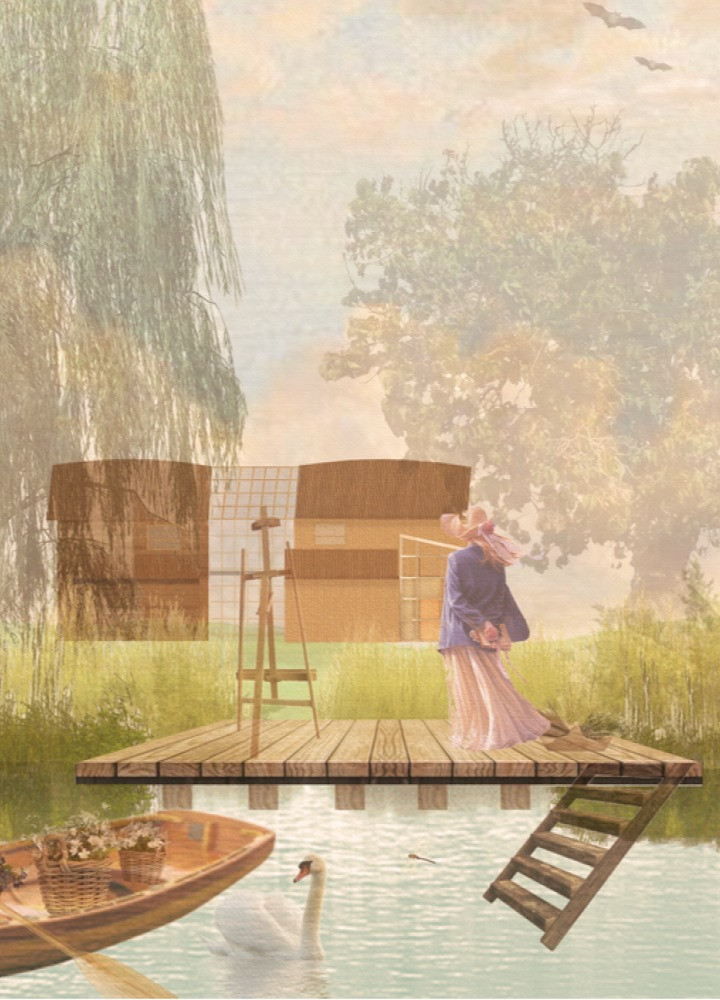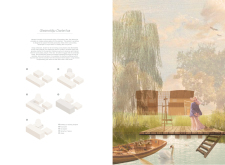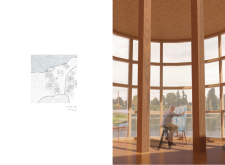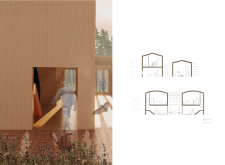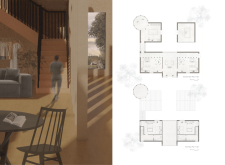5 key facts about this project
The architectural design integrates multiple features that cater to the diverse needs of artists. Key components include spacious work areas for painting, areas dedicated to storage, and social spaces for interaction and collaboration among artists. The layout facilitates both individual and collective activities, promoting an environment conducive to creative work.
Unique Design Approaches
One of the standout aspects of this project is its integration of natural elements into the design. By utilizing large windows, the workshop maximizes natural light and offers expansive views of the lake. This design choice not only enhances the working environment but also encourages a connection with the outdoors, allowing for inspiration to flow from the breathtaking landscape.
Additionally, the building employs sustainable materials such as wood, stone, and clay bricks, which contribute to its durability and aesthetic appeal. The use of these materials reflects an understanding of the local context and promotes ecological responsibility.
Architectural Layout and Functionality
The workshop features a modular design, allowing adaptability to various artistic practices. Each segment of the building serves a distinct function yet is cohesively linked to the overall design intent. This approach ensures that artists can move seamlessly between different spaces, whether shifting from a workspace to relaxed lounging areas or venturing outdoors.
Outdoor spaces are an integral part of the architecture, as they provide additional environments for contemplation and artistic exploration. Patios, gardens, and paths lead towards the lake, encouraging visitors to interact with the natural landscape.
For a more comprehensive understanding of Gleznotāju Darbnīca, readers are encouraged to explore the architectural plans, architectural sections, and various architectural designs that further illustrate the intricacies of this project. The architectural ideas present in this work showcase the thoughtful balance between function and aesthetics that characterizes contemporary architectural practice.


